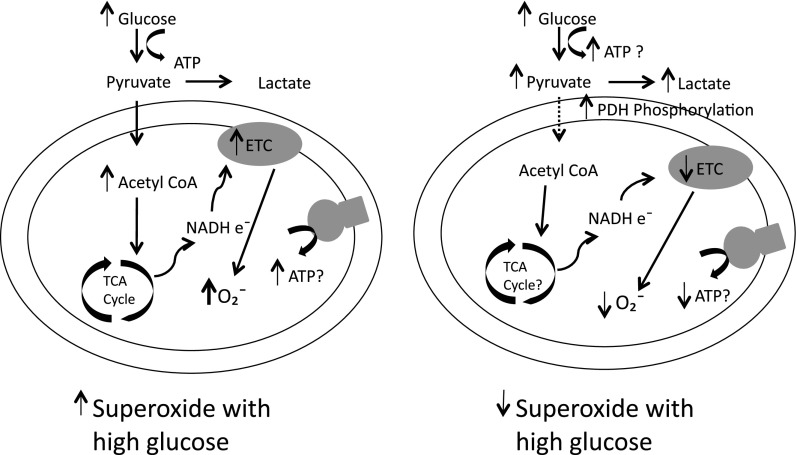Figure 1.
New evidence-based hypothesis implicating reduced superoxides in diabetes complications. The conventional wisdom views that with excess intracellular glucose exposure there is a consequent increase in pyruvate-mediated stimulation of the TCA cycle leading to increased production of electron donors to drive the ETC and generate superoxide. However, based on new in vivo data from the diabetic kidney and nerve, a counterview suggests that excess intracellular glucose enhances PDH phosphorylation to block pyruvate uptake into mitochondria, which results in reduced activity of the ETC and limits mitochondrial ATP production. The reduced ETC activity will result in less superoxide production—rather than more—in diabetic organs in vivo. Increased glycolytic flux may also be a feature in target organs of diabetes complications.

